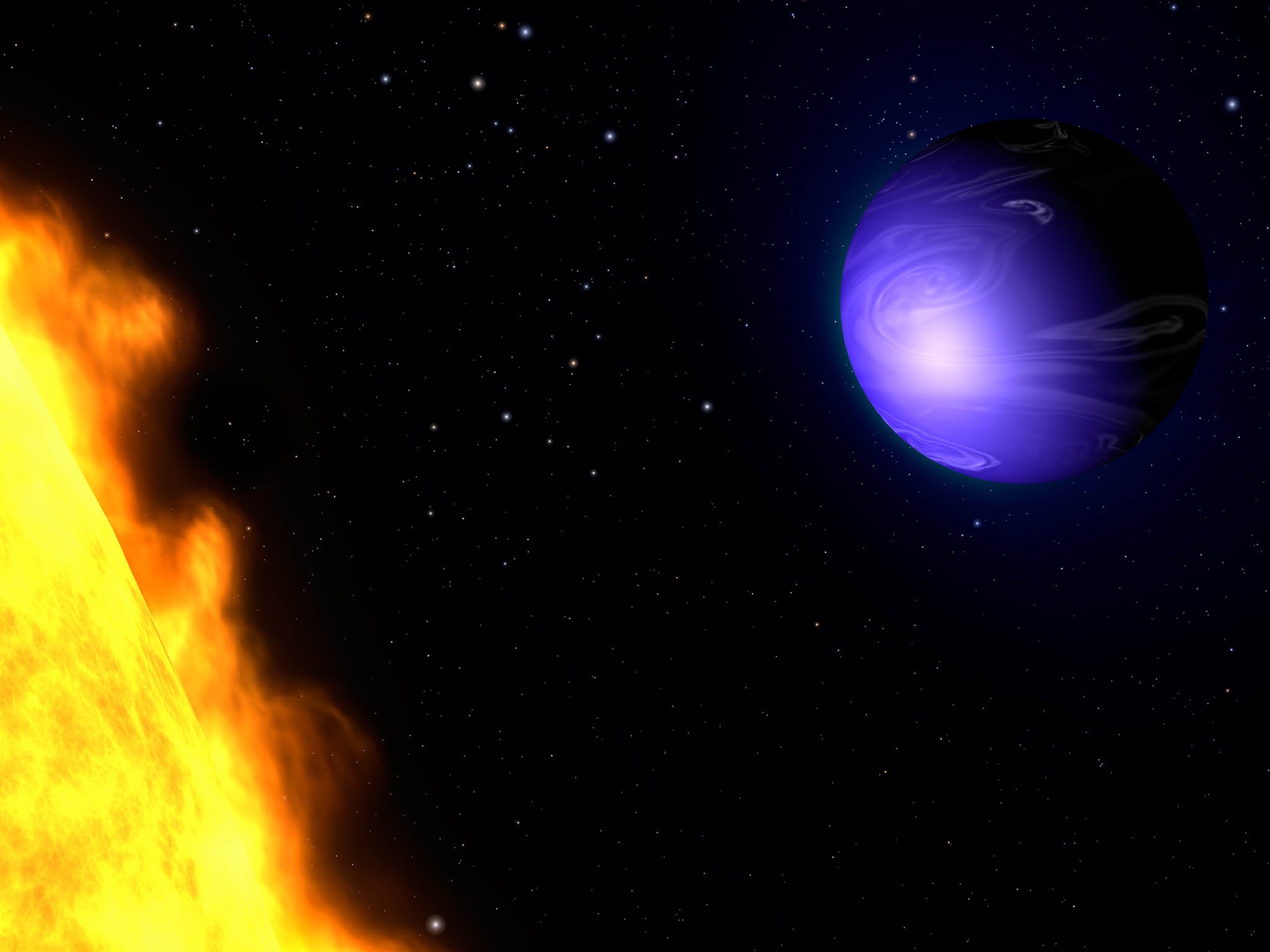Alien planet seen being battered by 5,400mph winds in first weather map outside our solar system ever
The wind travels seven times faster than the speed of sound

Your support helps us to tell the story
From reproductive rights to climate change to Big Tech, The Independent is on the ground when the story is developing. Whether it's investigating the financials of Elon Musk's pro-Trump PAC or producing our latest documentary, 'The A Word', which shines a light on the American women fighting for reproductive rights, we know how important it is to parse out the facts from the messaging.
At such a critical moment in US history, we need reporters on the ground. Your donation allows us to keep sending journalists to speak to both sides of the story.
The Independent is trusted by Americans across the entire political spectrum. And unlike many other quality news outlets, we choose not to lock Americans out of our reporting and analysis with paywalls. We believe quality journalism should be available to everyone, paid for by those who can afford it.
Your support makes all the difference.Winds of up to 5,400mph have been discovered around an alien planet, after scientists produced the first ever weather map outside our solar system.
Researchers from the University of Warwick found winds that were 20 times faster than anything ever recorded on Earth.
The wind was found on a planet named HD 189733b. Located 63 light years from Earth, it is one of the most studied planets in a group known as “Hot Jupiters”.
The winds were recorded travelling at 2km per second - around seven times faster than the speed of sound. They blow around the planet's equator, from the heated day side of the planet to the night side.
Lead researcher Tom Louden, from the University of Warwick’s astrophysics group, said: “Whilst we have previously known of wind on exoplanets, we have never before been able to directly measure and map a weather system.”
The planet is 10 per cent larger than Jupiter, but is 180 times closer to its star. Its size and its relative closeness to our solar system makes it popular with astronomers for research.
Co-researcher, Dr Peter Wheatley says: “We are tremendously excited to have found a way to map weather systems on distant planets.
“As we develop the technique further we will be able to study wind flows in increasing detail and make weather maps of smaller planets.”
Scientists hope these measuring techniques can be used to study the weather on other planets that are similar to Earth.
The measurements were made with the help of Harps telescope in La Silla, Chile.
Join our commenting forum
Join thought-provoking conversations, follow other Independent readers and see their replies
Comments